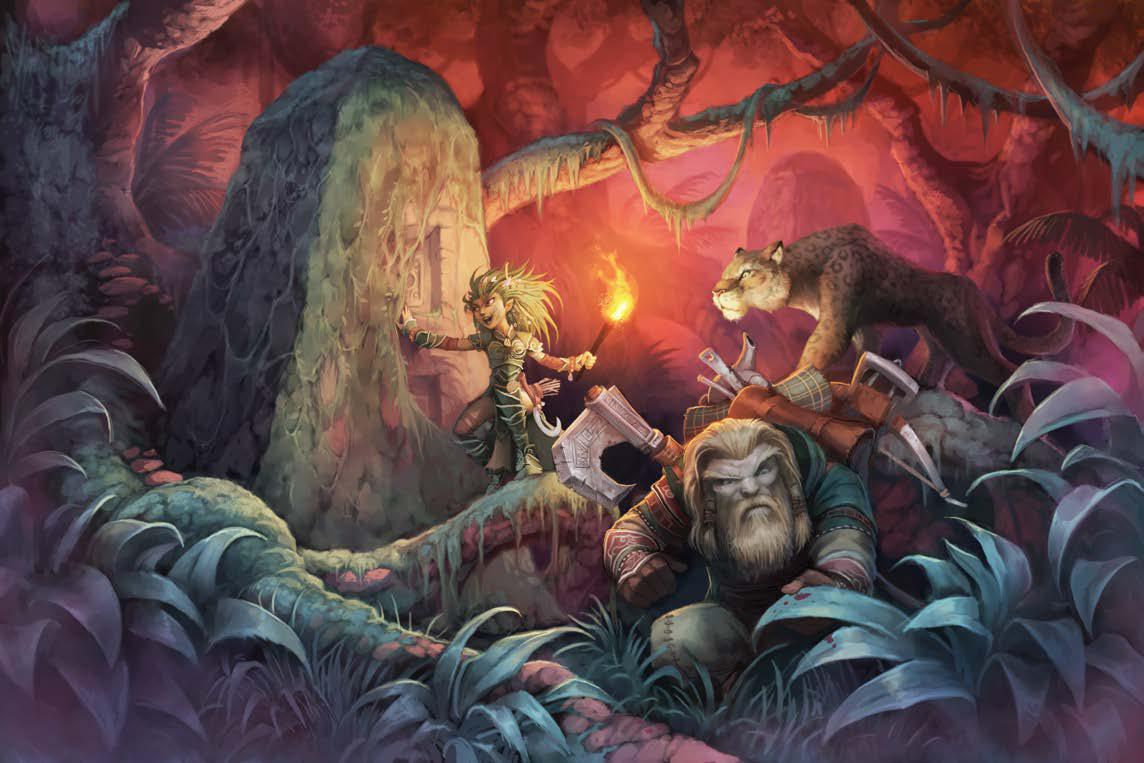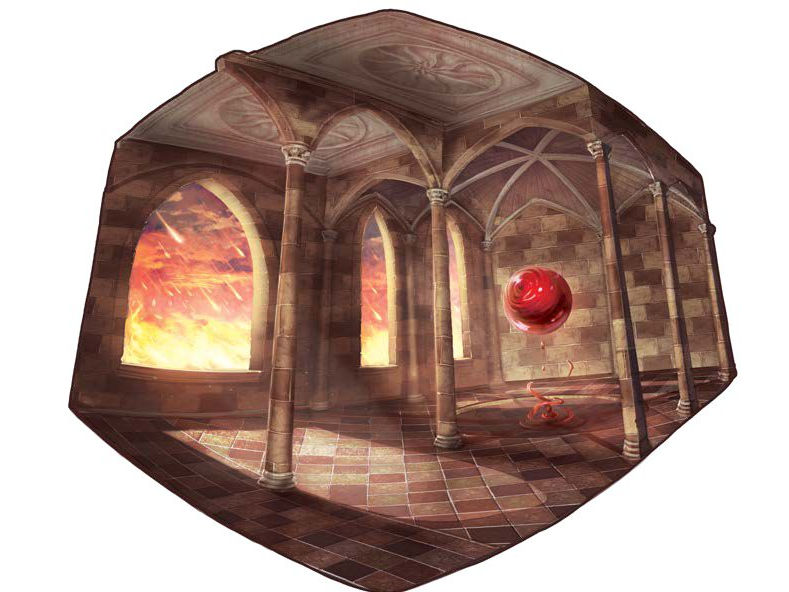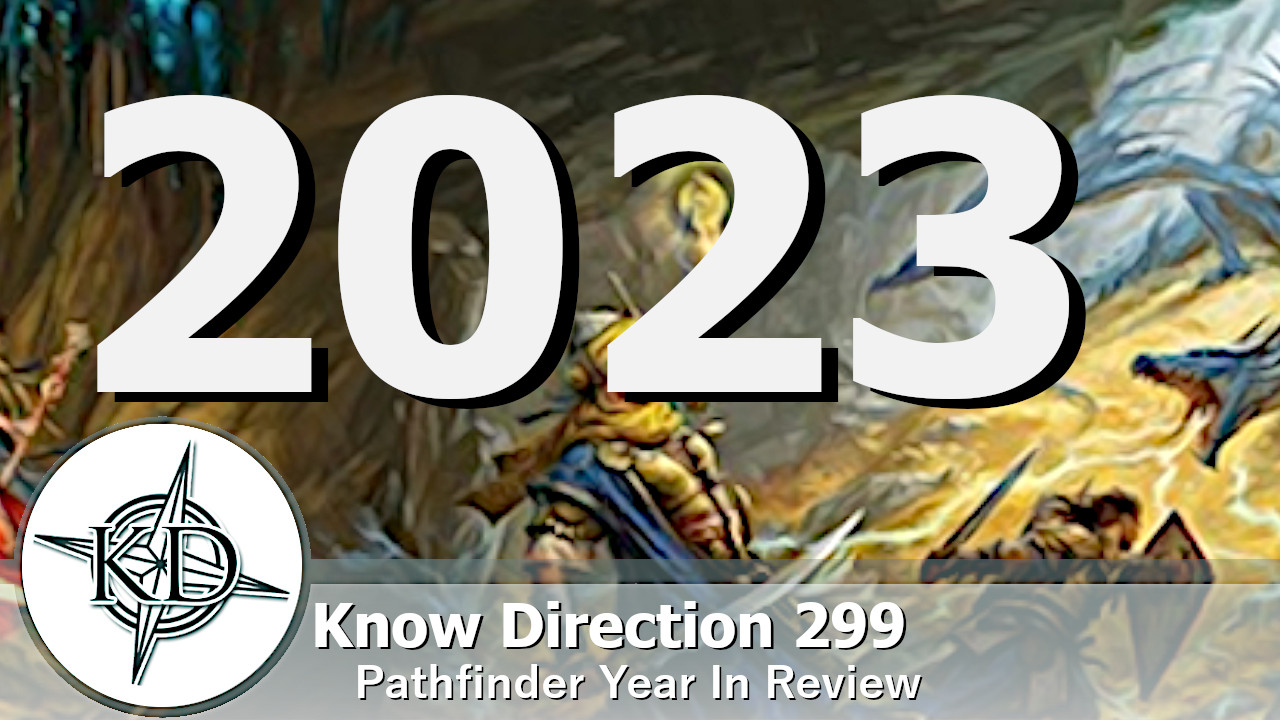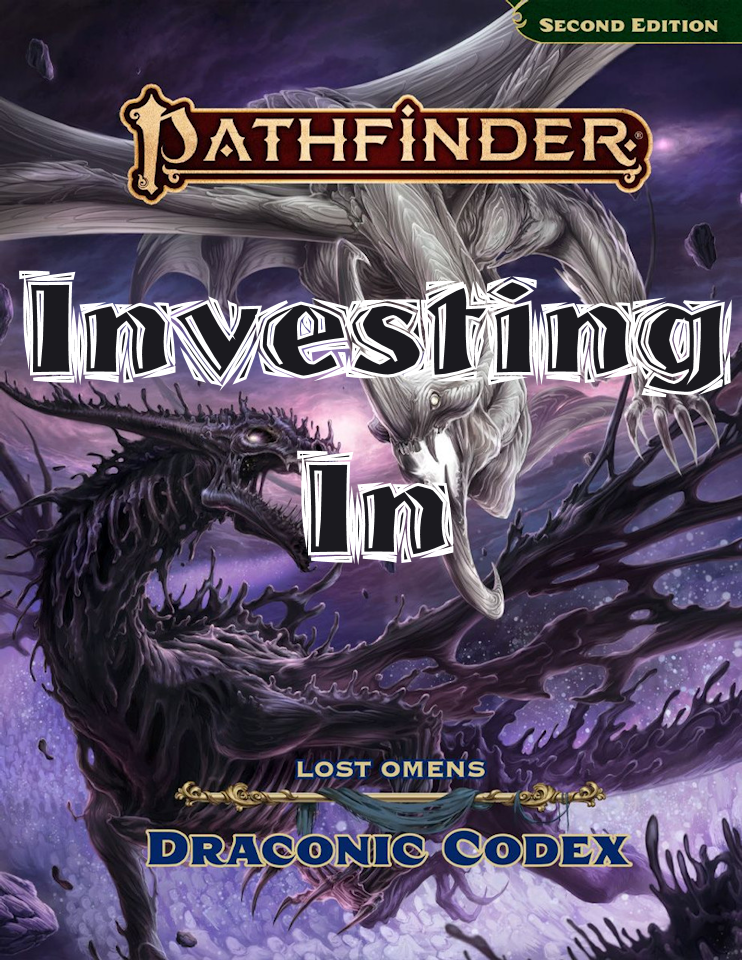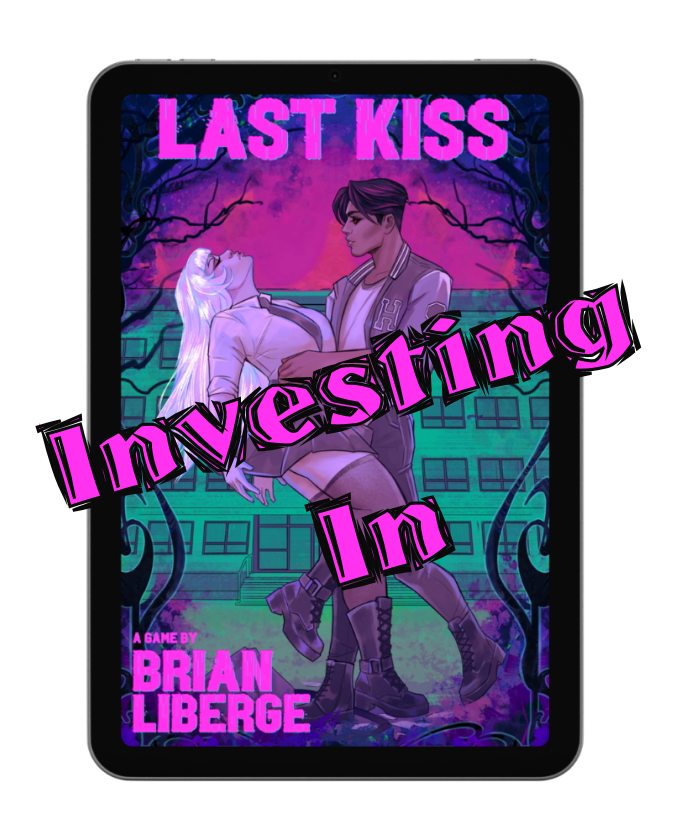The focus of every Pathfinder game is the player characters—they’re the stars of the show and appear in every scene that plays out in-game. But what about those scenes? What stories are being told? What old legends are being discovered, and what new ones are being forged? Who are the villains, the allies, the traitors, the lovers, the monsters, and the gods? Who runs the world? When you’re the Game Master, that’s all up to you!1
PAX Unplugged has come and gone. It was an amazing convention, and I hope you can join me there next year. There’s a number of games coming to crowdfunding next year I’ll be sure to remind everyone of. I’m also waiting on a playtest document for 5th Conspiracy so I can run that for some folks. In the meantime, I’m excited for some upcoming holiday relaxation with friends and family. Thankfully we’re also going to get some Pathfinder in! As I ready for our next Kingmaker session, I thought I’d highlight some parts of the new Remaster GM Core!
An Introduction
GM Core starts off at about the original Core’s chapter 10, which was titled Game Mastering. The introduction’s very first subsection is “The Game Master” so that feels appropriate too. It’s basically what you’re signing up for with a reminder you don’t have to have mastery over the rules, nor should you be the absolute voice at the table. Pathfinder is indeed collaborative, as any good game and table should be. A lovely sidebar reminds the first rule is that the game is yours. Do with it what you will. Change rules. Change the world. I like the reminder that there’s no right or wrong way to GM, just have fun together and it’s important the GM has fun too! I always feel bad when Stephen over at Roll for Combat doesn’t get to leverage some cool monster or enemy ability. Imagine reading and planning for weeks (maybe months) and then boom, fight’s over in one round and you got no chance to use that cool ability. You can weave it in somewhere, but it’s not fun if the characters always trounce the enemy or more importantly they make it seem adversarial out of the game. It’s not players versus GM, it’s players and GM alike making a story with challenges and celebrations.
Running the Game
And of course to help guide the comfort, communication, and consent in that game we get now a more prominently placed safety tools sidebar right in Chapter 1: Running the Game. It was in the original core book but nestled within chapter 10. I like splitting out GM details for treasure, monster creation, etc. but even more so that chapter 1 is about the base of what’s acceptable or not (Pathfinder Baseline), those safety tools, handling objectionable content, and the impacts to real life. Bleed from characters happens and so the Social Spillover section is a good one to review. This chapter is honestly a good one to review as a whole table in your Session 0. Always have your Session 0! Get everyone on the same page about tools, themes, etc. I’ll point over to that premise document from 5th Conspiracy that I mentioned last time; it’s useful for any game! We get a review of choosing campaigns, adventure paths, Pathfinder Society, building your own adventures, and of course making characters that again should be part of Session 0.
I’m also doing some due diligence for myself and our Kingmaker game around pacing, enjoyment of the process, etc. We had a great discussion last time on hesitancy in-character and other impacts to the overall speed of the game. I want to encourage roleplaying (we’re a very RP based group) but cool combats and getting through the story is important too. One thing asked of me was handling some of the exploration challenges with more or less better expediency. While I tried to highlight some of the challenges with swimming across a deep lake the first time, once they managed to find a way to handle it I tried to speed through it faster the next and barely do so the future times. I think that’s helping. However, reminding myself of some key follow through as GM would help too. The section on Special Considerations helps there with “Yes, But…” or as those sale-trained would tell you, it’s “Yes, And…” lessons. You can try anything, but/and here’s what you have to roll or here’s what happens. It’s once we get to Running Encounters that I saw some sidebars I hadn’t seen before entitled GM Priorities. And I think they’re good ones to keep in mind.
For example, when running encounters GM’s should keep in mind the following:
- Create a fun experience for all including yourself
- Answer questions quickly and decisively when possible
- Build anticipation for what’s next
- Emphasize thrilling action and setting a rapid pace
- Remind players it’s their turn or on deck
- Show the immediate consequences of their actions
I leverage Herolab for characters and initiative, and we all encourage one another to describe our actions. I don’t go into too much detail for enemies, unless it’s some special move or ability. Critical hits should always get a bit more flair too.
When running exploration mode:
- Make it fun, but keep it a smooth experience
- Utilize vivid sensory detail to explain the area (what do you smell, hear, see…)
- Shift time to emphasize tension and uncertainty
- Speed past the uneventful
- Get players to add details; ask for their reactions (I’ve noted some GMs ask what characters are thinking about at times)
- Offer small-scale mysteries to build intrigue and get investigation into what you want them to look into
- Rolls will happen. Find ways to keep things moving or utilize failure to add interest. (Failing doesn’t usually mean game over. Just more opportunity)
- Plan transitions into encounters.
The highlight of sensory detail is wise. I’ve been trying to do that more in games where I’m primarily utilizing a path. I used to write very detailed descriptions – and I still do sometimes – but in growing to trust my improv of such, I’ve also been less purposeful in doing so. There’s also a subsection on Investigations and roleplaying, like encouraging players to talk through their thought processes and see how they get to certain conclusions. It can be their inner monologue, and that’s okay. Maybe some things are secret IC but not OOC. Many Powered by the Apocalypse games encourage that open exchange OOC so characters and/or the GM can find ways to bring things up. I do want to be careful of time with Kingmaker too. I’m usually talking in an hour or multiple hour segments, painting what’s happening, but certain areas are getting repetitive now. I also want to flow/transition into encounters better when running into things, especially as the players don’t always fight everything they find. Indeed, I’ve been pleased that the players have chosen an “all are welcome” community and no creature is just evil because of what it is. Helps that alignment is gone too.
Finally, when running downtime, a GM should consider:
- Just because it’s not fighting a villain or exploring an ancient ruin, doesn’t mean it can’t be interesting or important to the story. (it helps that Kingmaker has a lot of NPCs and kingdom related activities to help encourage such)
- Demonstrate changes to the settings based on the PCs’ achievements (some are obvious in Kingmaker, but others need to be improvised and/or decided upon)
- Emphasize PC planning and “the fruit it bears” (i.e. what did their planning get them/the community)
- Avoid bogging the game down, even with a lot of time passing. Minimize how many rolls are needed (which our player helping handle Kingdom turns really helped with last time)
- Bring back compelling NPCs or plot thread (which I very much enjoy doing)
- Interject events and scenes that may be interesting and help the world grow/feel alive (again Kingmaker has good ideas here, but I’m adding more)
- Finally it’s noted to switch to encounter/exploration mode as necessary. I want to plan that better as I noted above.
Building Games
A lot of very useful, important advice and that’s only through the first 45 pages! And there’s way more than I’m highlighting here. Honestly, it’s a separate book for GMs but it’s well worth everyone reading through Chapter 1 in my opinion. Chapter 2 turns to building your game like will you run an adventure or build your own, how do you incorporate player goals, make interesting recurring villains, or determine themes that fit with your group. Beyond that is actually creating adventures and encounters. I quickly appreciated the updated environment/climate detail like on page 95 with a temperature effects table. All will be useful for the various exploration of the Stolen Lands in Kingmaker. High level encounters tend to really leverage the environment, and I do always appreciate seeing how talented GMs like Matt Mercer weave that into their custom games.
There’s a new section on Dynamic Encounters and building in elements that will be helpful. Examples include hazards enemies may be aware of but not always like pipes that spew fire/acid/scalding water or maybe certain traps. Evolving Battlefields isn’t something I’d often considered like floating platforms on a river, teleporting between locations/rooms, or even a third party stumbling in on the event. Examples are given of a rampaging monster (owlbear!) or a restless spirit, but certainly there’s none of those in Kingmaker… The more obvious examples reminded me of big villain fights like stopping a cult from a ritual that was empowering/protecting the leader. Other ways to make your encounters dynamic include combining or splitting out what you had planned encounter wise, offering a time pressure like due to a collapse or the rise of some great evil, weaving in another objective or two like saving prisoners. There’s more to cover like Opponent Synergy, Misdirection, and setting up a good Recurring Villain but you’ll have to read that over for yourself! A nice sidebar on Social Encounter examples is worth mentioning, so it’s not all combat. My group is very good handling social encounters – and they love their diplomacy – but I can tell a few are itchy for more combat.
The Age of Lost Omens
Chapter 3 details our Age of Lost Omens including timeline/history, the lands, the people, the cultures, and of course religion. The Eye of Dread got a nice update what with the Whispering Tyrant’s domain from the Isle of Terror and that influence upon neighboring lands like Ustalav, Oprak, and of course Lastwall. A beautiful shot of the Mwangi (see below) is given with detail of the long-existing civilizations present there. There’s an excellent summary of adventure opportunities from pirates in Bloodcove or Sargava, to the Gorilla Kings in Usaro. I do want more information on the Kholo, the gnolls of the Mwangi. One of my players in Kingmaker is utilizing the ancestry and that Mwangi origin, which really sets up a tonal difference from the gnolls of other regions. Thankfully the Kholo are mentioned explicitly as such in the ancestries area, with an adorable bust photo much like the others. There’s no mention of the word Gnoll in fact, which may be an OGL to ORC differentiation! I’m all for the Kholo and their focus on storytelling and ancestral knowledge! Jumping to the last section of the chapter, we get that featured detail on the Planes we saw in Rage of Elements, fully updated so a GM doesn’t require that book to understand the Inner and Outer Sphere or what the Void is. Interesting how the main deities of The Universe are Gozreh and the Dominion of the Black, i.e. those divinities and gods that exist between the stars within the Dark Tapestry. Zon-Kuthon has met them; it didn’t go well.
All the Subsystems
Chapter 4 is all the lovely Subsystems you can use, from Pathfinder Society’s commonly used Victory Points to my love of Influence and Hexploration, which is very much utilized and grown upon for Kingmaker. Oh I should mention also that Foundry’s Kingmaker package is now complete! I love it, and hope to see the hexploration features they put in made generally available. The artwork is also stunning. Anyway, back to Subsystems. These are all from the Gamemastery Guide though why I’ve never seen/read through the Infiltration system is beyond me. This is the system and guidance for when your players want to get their characters into a place or group without combat. Think Assassin’s Creed unless you go hard at fighting everyone like some people… The Awareness Points systems help you determine the enemies awareness with complications and events happening as you grow in points. At 20, the infiltration fails and probably there’s some major combat to be had or perhaps arrest, even social bargaining! There’s some places this could come in handy in Kingmaker, depending what the players choose to do so I’m glad to have reviewed this.
Treasure!
Finally, Chapter 5 is all things treasure starting on page 219. Players don’t care about treasure though so you can ignore all of it. The real reward is helping people and the friendships we make along the way. I mean, that’s true, but who doesn’t enjoy some treasure. We get all the quintessential details for treasure like crafting and investing. One particular note I saw is that now you only need the formula for uncommon or rarer items. I guess if you’ve the right feat, it’s presumed you can make the common? And while we haven’t gotten the updated Alchemist yet, we do have a whole slew of alchemical equipment before digging into the various materials available in Pathfinder. Well, most anyway. Orichalcum is listed but Noqual is not, and for various reasons that’s important to my overall Pathfinder series of campaigns. It’s part of Grand Bazaar so maybe we’ll see all that updated in a future book.
Many magical item names have been changed but there’s many fine additions too, even if they appear similar to something from say other games… Frozen Lava are captured bits of elemental light, fire, and lava from a volcanic eruption that explode like fireballs. Apex magic items – those 17th level powerful items many players will dream of – got updated names to be free of the OGL. They along with Talismans and Staves saw changes to incorporate errata, as this was the definitive right time to do so. Frozen Lava has a held, reusable version called Eternal Eruption where the Frozen Lava reforms within 2d4 hours. We’ve got a few artifacts listed as well including Iomedae’s updated sword Serithtial. Relics got updated gifts, which I’m sure will please my brother who is leveraging them for his game. It doesn’t appear any are brand new but correct me if I’m wrong. And before the close out the chapter, there are treasure tables for each level including cost and page to view. These aren’t rollable tables but if you need them to be then you easily could work your way down.
It’s been over a month, but I’m still reading through Player and GM Core. I’ll spend days reading through to find all variations and additions. I’ll certainly do more reading over my upcoming vacation. But I hope you’re investing in some gaming over the holidays too, especially new games and of course Pathfinder2E! I’m excited to get another Kingmaker session in before the New Year.
Want to try Dropout.tv?
I also want to do something different as part of my last article for the year, and with it being the holidays… I want to give a special shout out to Dropout.tv (2024’s preview video below) and its programming, which has brought me a lot of joy over the last year. Their shows like Dungeons and Drag Queens, Dirty Laundry (my fav), Game Changer, Um Actually, the new Very Important People, and the adorable Burrow’s End have been magical and hilarious. You can get a year of it right now for 20% off at 47.99. But I’ll tell you what. If you’re not sure you want to commit to such, because I love y’all and want you to get the love and laughter from it that I have, I will buy you a 1 month subscription if you message me your email address so I can send you that gift. Maybe the first 100 people, if even that many read this and want it? That way you can check it out over the holidays, binge some great shows, and then make the decision to invest in it long term. You can email me here or a DM on instagram. Reminder to give me your email address as it’s required for their gift subscription form. Thank you all for sharing 2023 with me and bringing all that you do to this community!
Happy Holidays! Merry Christmas! Happy Yule! Happy New Year!
Investing In:
I wasn’t quite sure what to name my article series when I first started but the idea of showcasing or discussing things that make me excited, that I find new and interesting, or maybe I’m otherwise passionate about seemed to fit with the idea of Investing In something like the Pathfinder 2E mechanic. To use some magic items you have to give that little bit of yourself, which helps make these things even better. I like the metaphor of the community growing and being strengthened in the same way!
I also want to hear what you’re Investing In! Leave me a comment below about what games, modules, systems, products, people, live streams, etc you enjoy! You can also hit me up on social media as silentinfinity. I want to hear what excites you and what you’re passionate about. There’s so much wonderful content, people, groups (I could go on) in this community of ours that the more we invest in and share, the better it becomes!
Sources
Banner – Pathfinder GM Core cover, Paizo, art by Wayne Reynolds
- Introduction excerpt, Introduction, Pathfinder GM Core, Paizo
- Introduction banner, Introduction, Pathfinder GM Core, Paizo
- Exploration Activities banner, Chapter 1: Running the Game, Pathfinder GM Core, Paizo
- Armageddon Orb, Chapter 2: Building Games, Pathfinder GM Core, Paizo
- Mwangi Expanse banner, Chapter 3: Age of Lost Omens, Pathfinder GM Core, Paizo
- Victory Points banner, Chapter 4: Subsystems, Pathfinder GM Core, Paizo



